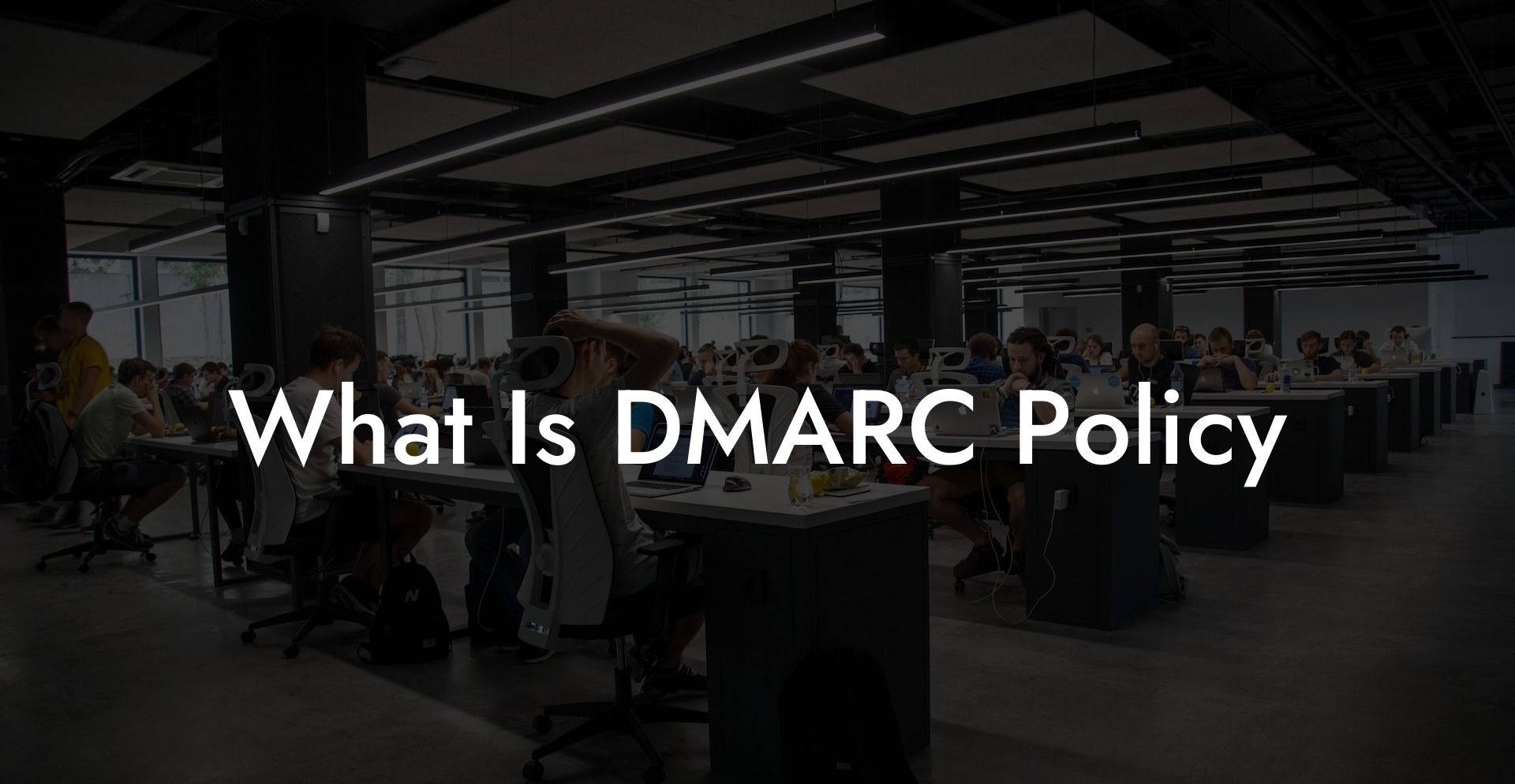As cybersecurity continues to be a top priority for businesses and individuals alike, discussing essential tools to protect against email and phishing attacks remains crucial. One of the key components in this battle is DMARC policy – an email authentication protocol that helps to safeguard email inboxes from potential fraudulent activities. In this article, we will delve deeper into the world of DMARC policy, exploring its features, benefits, and how it works to shield your inbox from unwanted threats.
What Is DMARC Policy Table of Contents
Understanding DMARC Policy
DMARC, which stands for Domain-based Message Authentication, Reporting & Conformance, is an email validation system used to protect email domains from being exploited by cybercriminals. It brings together two other email authentication protocols – SPF (Sender Policy Framework) and DKIM (DomainKeys Identified Mail) – to ensure that messages are legitimately from the sender's domain.
How Does DMARC Work?
- Authentication: DMARC policy authenticates messages by checking both the SPF and DKIM records of the email. This process verifies that the email hasn't been tampered with and that it comes from an authorized sender.
- Policy Application: Once the email has been authenticated, DMARC decides what action to take based on the domain owner's policy settings. The policy can have one of these settings: 'none' (monitoring mode only), 'quarantine' (deliver the email to a spam folder), or 'reject' (reject the email outright).
- Reporting: DMARC provides the domain owner with regular reports regarding the authentication results. This data assists the domain owner in identifying issues in their email infrastructure and spotting potential attacks.
Benefits of Implementing DMARC Policy
- Email Security: DMARC helps to prevent cybercriminals from sending fraudulent and malicious emails that could potentially harm your business or compromise sensitive information.
- Brand Reputation Protection: Implementing DMARC policy reassures your customers that the emails they receive from your domain are legitimate, protecting your brand's image and trustworthiness.
- Enhanced Deliverability: Email servers are more likely to accept your messages when DMARC policy validates your emails, reducing the chance of your legitimate messages being flagged as spam.
- Visibility and Control: Regular reports provided by DMARC help you stay informed about the activities related to your domain and allows you to make necessary adjustments to your email infrastructure for enhanced security.
Protect Your Data Today With a Secure Password Manager. Our Top Password Managers:
What Is DMARC Policy Example:
Imagine your business, XYZ Corp, has been targeted by cybercriminals. They've forged your domain name in their emails and are sending phishing attacks to your clients, damaging your brand reputation and causing potential losses for your customers.
To combat this, you decide to implement a DMARC policy to your domain. You set up SPF and DKIM records, then configure the DMARC policy to 'reject' unauthenticated emails. Now, when email servers receive messages claiming to be from your domain, they'll first authenticate the emails using DMARC.
Legitimate emails from your domain will pass the DMARC checks, ensuring they're delivered to your clients' inboxes. Fraudulent emails, however, will fail the checks and be rejected, protecting your clients from phishing attacks, and preserving your brand reputation.
Implementing a DMARC policy is an essential step towards fortifying your email security and safeguarding your online presence from cyber threats. It not only helps protect your business and clients from malicious attacks but also instills a sense of trust and builds your brand reputation. So, don't wait any longer; secure your email infrastructure with a DMARC policy, and enjoy heightened protection in the ever-evolving digital world.
If you found this article helpful, please share it with colleagues and friends and explore our other guides on Voice Phishing for more insights into cybersecurity.
Protect Your Data Today With a Secure Password Manager. Our Top Password Managers:















